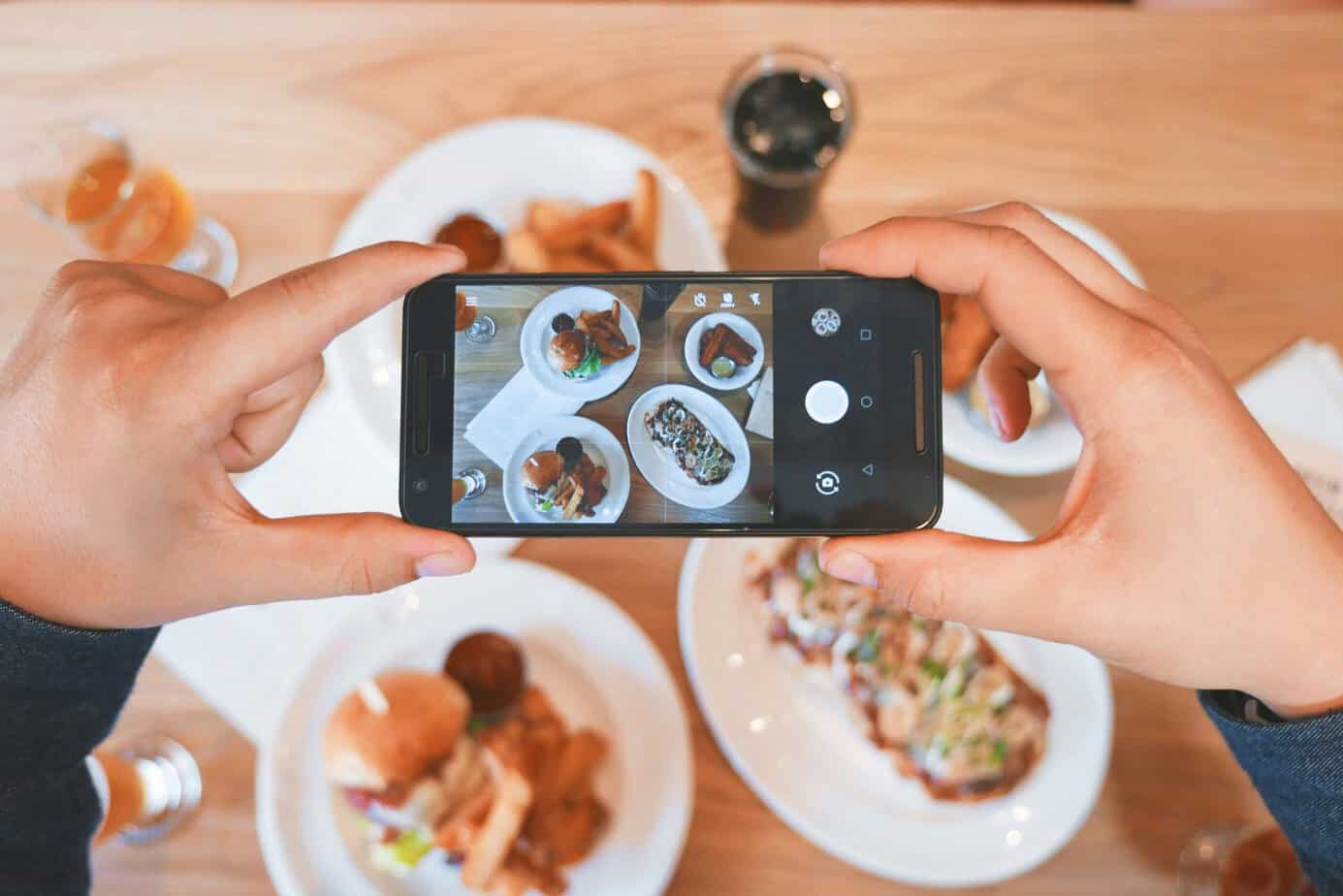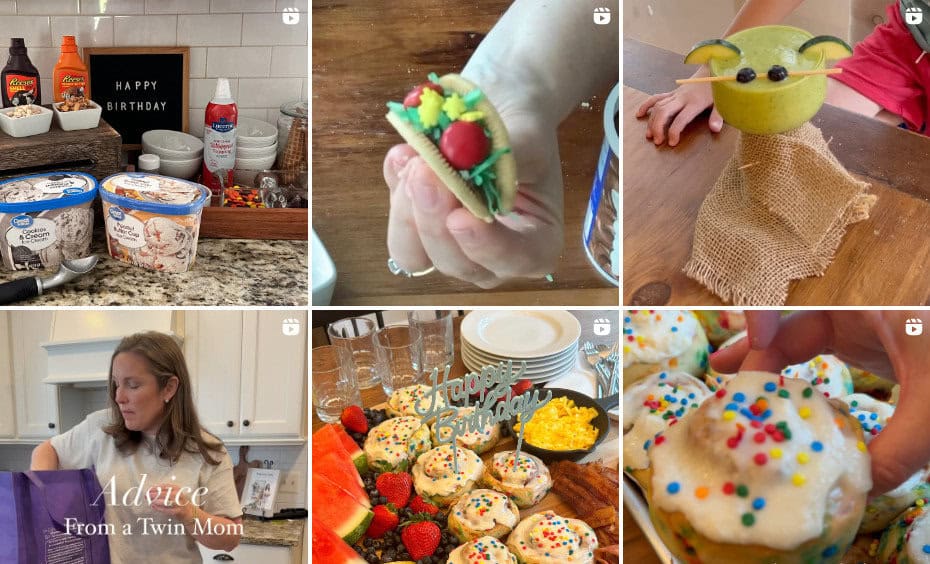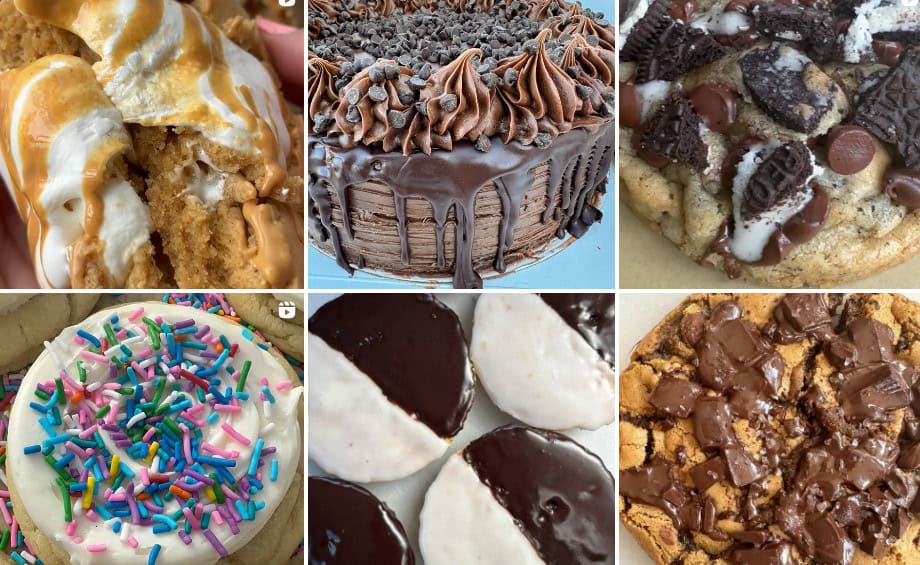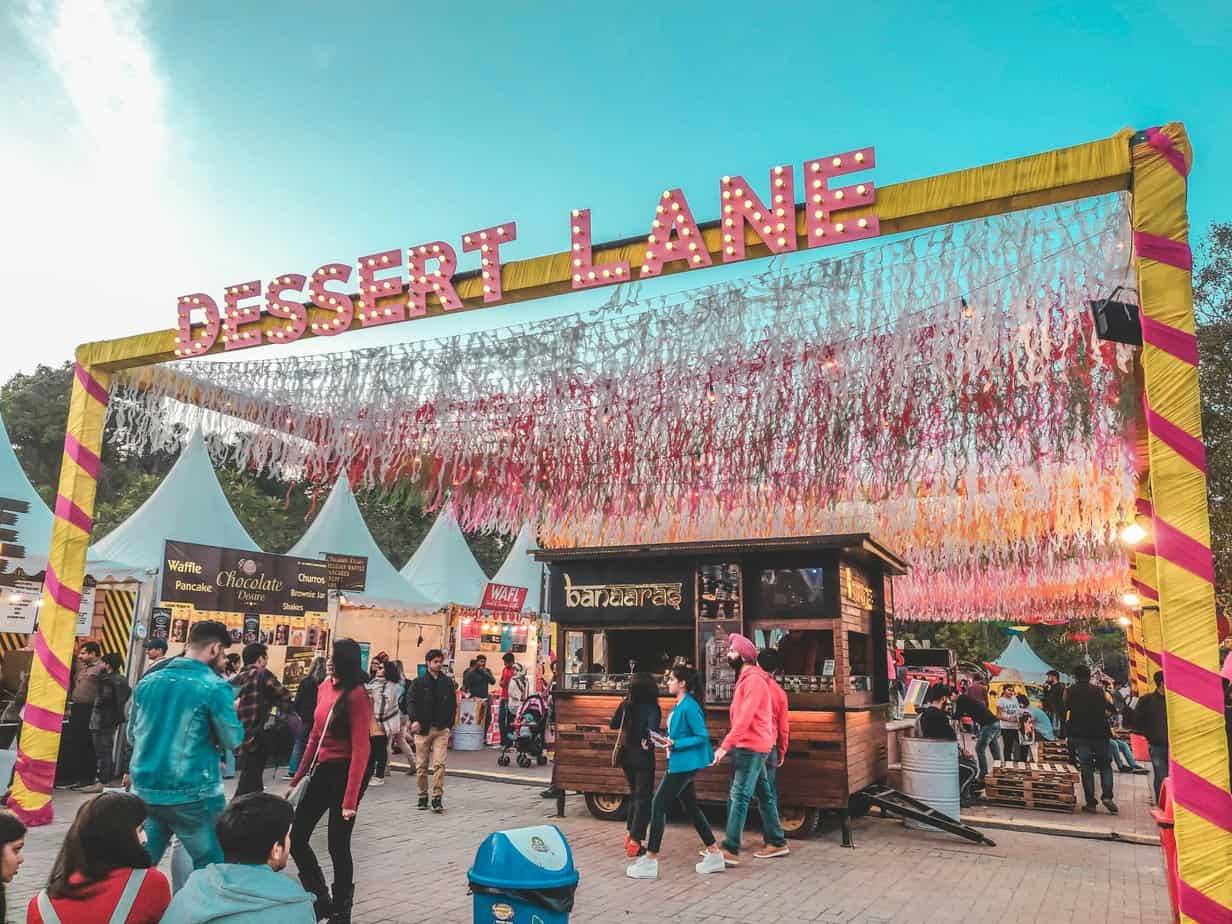Ever felt that irresistible pull when the scent of freshly grilled sliders wafts through the air, drawing you like a magnet to a food truck’s window? Food trucks aren’t just about curbside convenience anymore; they’re culinary adventures on wheels, serving everything from gourmet tacos to artisanal ice cream.
What’s their secret recipe for success? Well, it’s not just about the food—it’s about the innovative ways they connect with their audience and create buzz through strategic marketing. Let’s explore the food truck marketing world and uncover the secret sauce to how small bites can lead to big appetites and even bigger followings.
Introducing… Influencer Marketing and The Micro-Influencer

An influencer is a content creator and individual who can sway public opinion about products, services, or various matters. Usually, these individuals are professionals in a certain field or celebrities with a huge following. Aka a macro-influencer.
A micro-influencer is a smaller version of what we’ve just described. They are like that neighborhood foodie who always knows the best-hidden gems for tacos or the most Instagrammable dessert spots. They may not have millions of followers, but their recommendations carry the weight of a food critic with a loyal following eager to devour every suggestion they serve up! Micro-influencers, typically having between 10,000 to 100,000 followers, are proven to have higher engagement rates—up to 22.2 times more than macro influencers—with their audience. This makes them incredibly effective at influencing consumer decisions in niche communities and local markets.
Ok, so what is influencer marketing? Simply put, influencer marketing involves brands teaming up with influencers to promote their products or services. Even more simply put, it is brands and influencers collaborating.
Why is Engagement Rate So Important?
We mentioned that micro-influencers have higher engagement rates than their celebrity counterparts. But why does that matter? Engagement rate is crucial in influencer marketing for several reasons:
1. Authenticity and Trust: High engagement rates indicate that followers are actively interacting with the influencer’s content. Such as likes, comments, and shares, signifies genuine interest and trust in the influencer’s recommendations. Audiences perceive high engagement as a sign of authenticity, making them more likely to trust the influencer’s opinions and endorsements.
2. Reach and Impact: Engaged followers are more likely to pay attention to and act upon shared content. When an influencer promotes a product or service with high engagement, it reaches a larger portion of their audience organically. This amplification extends the reach of the marketing message beyond the influencer’s immediate followers, potentially reaching new audiences.
3. Conversion and ROI: A higher engagement rate often correlates with increased conversion rates. Followers who actively engage with an influencer’s content are more likely to convert into customers when presented with a compelling offer or recommendation. This directly impacts return on investment (ROI) for brands and businesses collaborating with influencers.
4. Algorithm Favorability: Social media algorithms often prioritize content with higher engagement rates, displaying it more prominently in users’ feeds. This increased visibility further boosts the influencer’s reach and ensures that their content reaches a larger and more receptive audience over time. For brands, this algorithmic favorability can lead to sustained visibility and brand awareness among relevant consumer segments.
Overall, engagement rate serves as a critical metric in influencer marketing, indicating the effectiveness of content in capturing and retaining audience attention, fostering trust, and driving meaningful actions such as purchasing decisions.
Register your brand on Afluencer to unlock powerful influencer partnerships.
Traditional Food Truck Marketing Methods
Before the advent of influencer marketing, food trucks primarily relied on traditional methods to promote themselves. These methods included:
1. Location-Based Marketing: Food trucks often utilized prime locations such as busy street corners, office parks during lunch hours, or popular event venues to attract foot traffic.
2. Social Media (Early Adoption): Initially, food trucks used social media platforms like Facebook and Twitter to announce their daily locations, menus, and special promotions. This helped them build a loyal local following.
3. Word-of-Mouth and Reviews: Positive customer experiences and reviews played a crucial role in attracting new customers. Many food trucks encouraged patrons to leave reviews on platforms like Yelp or Google Maps.
4. Collabs and Events: Partnering with local businesses, participating in food festivals, or organizing pop-up events helped food trucks expand their reach and attract new customers.
5. Branding and Unique Selling Proposition (USP): Establishing a memorable brand identity through creative truck designs, catchy names, and a unique menu helped food trucks stand out in a competitive market.
These traditional marketing approaches laid the foundation for food trucks to establish a presence and build a customer base, paving the way for more innovative strategies like influencer marketing in the digital age. The great thing is, micro-influencer marketing, which is not rigid in nature but more adaptable, fits in perfectly with traditional methods of food truck marketing.
Food Truck Marketing: Stirring in that Secret Sauce
Integrating the secret sauce that is, micro-influencer marketing with traditional food truck marketing methods can create a powerful synergy that boosts brand visibility and customer engagement. Here’s how this integration can be effectively achieved:
1. Social Media Amplification: Food trucks can leverage micro-influencers to amplify their social media presence. Influencers can create engaging posts, stories, and videos featuring the food truck’s menu items, ambiance, and customer experiences. By tagging the food truck and using relevant hashtags, influencers can expose the brand to their followers, who are likely to share similar interests in local dining experiences.
2. Localized Promotion: Micro-influencers often have a strong local following, making them ideal for promoting food trucks within specific neighborhoods or cities. Collabbing with popular influencers within the food truck’s operational area can drive foot traffic and increase brand awareness among residents and visitors.
Start collabbing with influencers today!
3. Content Creation and User Engagement: Influencers excel at creating authentic and engaging content that resonates with their audience. Influencers can create high-quality photos, videos, and reviews that showcase their unique offerings. User-generated content enhances the food truck’s online presence and encourages followers to interact and share their experiences.
4. Events and Collabs: Food trucks can organize events or collabs with micro-influencers to further boost their visibility. For example, hosting influencer meet-ups or sponsoring influencer-led food-tasting events can create buzz and attract new customers. Such partnerships also provide opportunities for influencers to create real-time content, generating immediate excitement and interest.
5. Word-of-mouth and Trust Building: Micro-influencers are perceived as more relatable and trustworthy than traditional advertising. Their recommendations and endorsements can significantly influence purchasing decisions, helping to build credibility and foster positive word-of-mouth.
Finding the Right Micro-Influencer for Your Brand
The right micro-influencers for food truck marketing can significantly enhance your brand’s visibility and customer engagement. Here are some effective ways to discover micro-influencers who can help promote your food truck:
1. Social Media Platforms
Instagram: Start by searching for food-related hashtags such as #FoodTruck, #StreetFood, or #Foodie. Look for profiles with high engagement and followers in the range of 10,000 to 100,000.
TikTok: The platform’s short-form video content is perfect for showcasing the vibrant, dynamic world of food trucks. Search for local food enthusiasts who post regularly about their dining experiences.
YouTube: Find content creators who focus on food reviews, street food, and local cuisine. YouTube influencers often have dedicated followers who trust their recommendations.
2. Influencer Marketing Platforms
Utilizing specialized platforms can streamline the process of finding suitable micro-influencers.
That’s where Afluencer (that’s us) comes in as a valuable platform that connects brands with influencers. We offer a vast database of influencers across various niches, including food and beverage. With Afluencer, you can filter your influencer search based on location, follower count, engagement rates, and more, making it easier to find the perfect match for your food truck marketing campaign. Check out these Top Food Influencers ready to Collab with you right now!
Need a food micro-influencer who can help draw families in? Dana has got you covered.

Need a dessert aficionado? Jennifer Mackencherry has got the gift of drawing in all those with a sweet tooth!

This is just the tip of the iceberg…
We also offer all the resources you need on influencer marketing and even have a dedicated support team on hand whenever you need it!
Getting started with Afluencer as a brand is super easy (we take a lot of pride in how user-friendly our platform is). And if you want to take things a step further, we highly recommend signing up for Premium Membership which is perfect for brands aiming to elevate their influencer marketing with superior coverage. Premium membership offers priority visibility and reach as well as enhanced exposure across our network through priority category listings, expanded Collab opportunities, and increased access to influencer applications and invitations.
3. Local Food Blogs and Publications
Reach out to local food bloggers and contributors to regional food publications. These individuals often have a strong local following and can drive significant foot traffic to your food truck.
4. Food Festivals and Events

Attend local food festivals and events to network with food enthusiasts and influencers. Many influencers attend these events to discover new food trends and businesses, providing an excellent opportunity for direct engagement.
5. Engage with Followers and Customers
Monitor your own social media channels for loyal customers and followers who frequently engage with your posts. Some of these individuals might already have a modest but engaged following and can become effective micro-influencers for your brand.
6. Collabs and Word of Mouth
Leverage existing relationships with other local businesses and influencers. Word of mouth within the influencer community can lead to organic connections and collabs.
By exploring these avenues, you can identify micro-influencers who align with your brand’s values and have a genuine interest in your food truck. Platforms like Afluencer simplify the process, providing a comprehensive toolset to connect with influencers who can authentically promote your offerings to a targeted audience.
Ready to grow your brand? Sign up for Afluencer
Food Truck Marketing: Stand Out From the Crowd with Micro-Influencers
Just like food, standing out from the crowd is both an art and a science. By integrating traditional marketing methods with the dynamic reach of micro-influencers, you can transform your food truck into a must-visit destination. Imagine lines of eager customers drawn in by tantalizing posts and stories of trusted local influencers, all buzzing with excitement to taste your delicious creations.
Ready to take your food truck marketing to the next level? Dive into the world of influencer marketing with Afluencer! Our user-friendly platform connects you with micro-influencers who can amplify your brand’s message and attract a devoted customer base.
Sign up for Afluencer today. Your next loyal customer could be just an influencer’s post away!